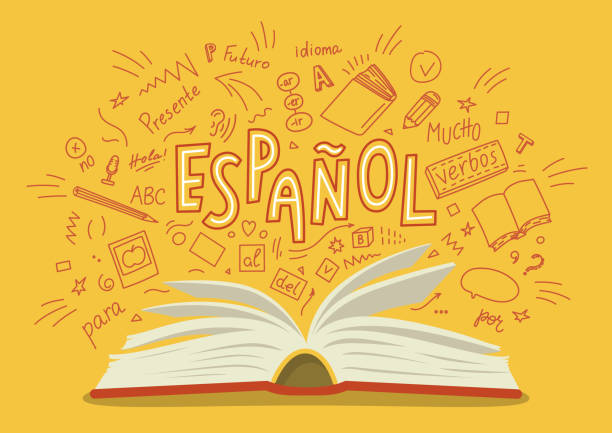solsticeuniversity.com – Spanish is one of the most widely spoken languages in the world, with over 500 million native speakers across more than 20 countries. Known for its rich history, cultural influence, and musical cadence, learning Spanish can open up a world of travel, literature, film, and personal connections. Whether you’re just starting or deepening your understanding, here’s a comprehensive guide to appreciating and mastering the Spanish language.
1. The Origin and Spread of Spanish
The Spanish language, or español, originated on the Iberian Peninsula as a dialect of Latin, brought over by the Romans in the 3rd century BC. The dialect evolved into Castilian, which spread across the region, eventually unifying Spain under one common language in the 15th century.
With the colonization of the Americas, Spanish expanded to Latin America, becoming the primary language in countries such as Mexico, Argentina, Colombia, and Peru. Today, Spanish is spoken across Europe, Africa, Asia, and North America, making it one of the most globally influential languages.
2. Basic Features of Spanish
Spanish is a Romance language, sharing similarities with other languages derived from Latin, such as Italian, Portuguese, and French. Some key features of Spanish include:
- Alphabet and Pronunciation: Spanish uses the same 26-letter Latin alphabet as English, with three additional letters (ñ, ch, and ll) and distinct pronunciation rules.
- Gendered Nouns: Like many Romance languages, Spanish nouns are gendered as masculine or feminine, often ending in -o for masculine (like libro for “book”) and -a for feminine (like casa for “house”).
- Verb Conjugations: Spanish verbs are conjugated based on tense, person, and mood, creating different forms that align with who is speaking or being addressed. For example, “I speak” is yo hablo, while “you speak” is tú hablas.
- Formal and Informal Speech: Spanish has both formal (using usted) and informal (using tú) forms of address. Choosing the right one is important in showing respect or familiarity.
3. Key Differences in Regional Dialects
While the fundamentals of Spanish remain consistent, the language varies across regions. Some distinctions include:
- Pronunciation: In Spain, especially in Castilian Spanish, the letters c and z are pronounced with a “th” sound, while in Latin America, they are pronounced as an “s.” So gracias sounds like “grathias” in Spain and “grasias” in Latin America.
- Vocabulary: There are many unique words depending on the region. For example, carro (car) is used in Latin America, while coche is common in Spain.
- Vosotros and Ustedes: Spain often uses vosotros as the informal plural “you,” while Latin America typically uses ustedes for both formal and informal situations.
Despite these differences, Spanish speakers from different regions can understand each other, much like English speakers from different countries.
4. Benefits of Learning Spanish
Learning Spanish has numerous benefits:
- Travel and Cultural Access: Spanish opens doors to understanding the culture, history, and local customs of more than 20 countries.
- Professional Advantage: Spanish is valuable in various industries, including healthcare, education, international business, and tourism.
- Cognitive Benefits: Learning any new language enhances brain function, improving memory, problem-solving skills, and creativity.
Additionally, Spanish gives learners access to a vast world of literature, music, and film from influential artists like Gabriel García Márquez, Pablo Neruda, and Almodóvar.
5. Tips for Learning Spanish
Mastering Spanish requires dedication, but with the right methods, it’s achievable and enjoyable:
- Immerse Yourself: Listen to Spanish music, watch films, and read books to familiarize yourself with vocabulary, pronunciation, and cultural context.
- Practice Speaking: Conversing with native speakers, whether through language exchanges, tutors, or friends, can build confidence and improve fluency.
- Learn Conjugation Patterns: Spanish verbs have distinct conjugations that follow patterns. Regular practice with conjugations is essential for fluency.
- Use Apps and Online Resources: Apps like Duolingo, Babbel, and Memrise are great for beginners, while online platforms like Italki and Preply provide one-on-one lessons with native speakers.
- Stay Consistent: Practicing every day, even if only for a few minutes, can make a big difference in retaining vocabulary and improving comprehension.
6. Common Missteps and How to Avoid Them
Some common challenges in learning Spanish include:
- False Cognates: Words that look similar in Spanish and English but have different meanings (like embarazada, which means “pregnant” rather than “embarrassed”).
- Verb Conjugations: While daunting at first, practicing a few verbs daily can make conjugations second nature.
- Informal vs. Formal Speech: Pay attention to context to avoid unintentionally sounding rude or overly formal.
With time, these challenges become easier to navigate, and Spanish will feel more intuitive.
Final Thoughts
Learning Spanish is more than just picking up a new language; it’s a gateway to a vibrant world of cultures, connections, and experiences. Whether you’re learning for travel, career, or personal growth, Spanish can enrich your life in countless ways. Embrace the journey, and soon you’ll find yourself connecting with people, places, and stories you may never have imagined.




